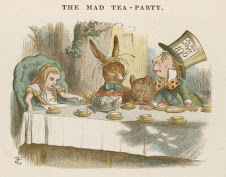Per Section 5100 of the California Election Code, ballot access for existing political parties (as opposed to proposed political parties) requires one of the two conditions below to be met:
(a) If at the last preceding gubernatorial election there was polled for any one of its candidates for any office voted on throughout the state, at least 2 percent of the entire vote of the state.(b) If on or before the 135th day before any primary election, it appears to the Secretary of State, as a result of examining and totaling the statement of voters and their political affiliations transmitted to him or her by the county elections officials, that voters equal in number to at least 1 percent of the entire vote of the state at the last preceding gubernatorial election have declared their intention to affiliate with that party.
Both options (a) and (b) tend to be difficult for third party candidates. Third party candidates rarely manage to obtain more than 2% of the vote for governor (this was accomplished by the Greens in the 2006 Gubernatorial Election and by the Greens & Libertarians in the 2002 Gubernatorial Election), but they tend to do much better in other statewide elections such as Lieutenant Governor, State Controller, and Insurance Commissioner).
On the other hand, third party candidates almost always fail to garner enough signatures from a number of registered voters equal to 1% of the statewide vote in the preceding gubernatorial election, as required by option (b). Therefore, as a general rule, it is easier for a third party to achieve ballot access in California via option (a) than via option (b).
With Proposition 14, only two candidates will advance to the November general election, and when it comes to statewide elections such as governor, lieutenant governor, state controller, you had better believe that those two candidates will be the top Democratic candidate and the top Republican candidate.
Proposition 14 supporters will point out that third party candidates will still have the option of fielding candidates in the June primary. The problem, however, is that under Section 5100 of the California Election Code, option (a) (attaining ballot access by obtaining at least 2% of the vote in the last gubernatorial election) can only be obtained during the general election–not the primary election.
Opponents of Proposition 14 voiced this concern in hopes that the crafters of Proposition 14 would amend the law to make it easier for third party candidates to achieve ballot access (this was done for 2004’s Proposition 62, which was defeated by Californians). However, the crafters of Proposition 14 were unwilling to amend the law (as Proposition 62 would have done, had it passed).
If third party candidates fail to make it to the November general election, option (a) no longer becomes an option for them. Therefore, Proposition 14, as it is currently written, makes it virtually impossible for most of California’s recognized third parties to maintain ballot access given that third parties are rarely able to qualify via option (b).
Ballot Access and California's Proposition 14
Yesterday, I wrote that since California's "top two" primary will basically create a run-off style election system, the primary ballot access question will be what the rules are governing access to the primary ballot. In a lengthy article at The Moderate Voice, Nick Riviera sums up the state's new ballot access regime, and argues that it is "bad news" for independents:
Labels:
ballot access,
CA
Subscribe to:
Post Comments (Atom)







No comments:
Post a Comment